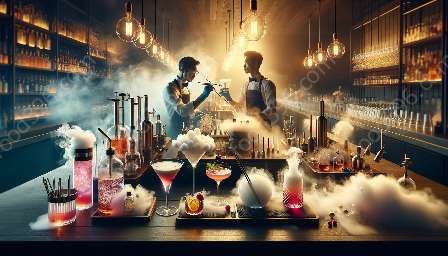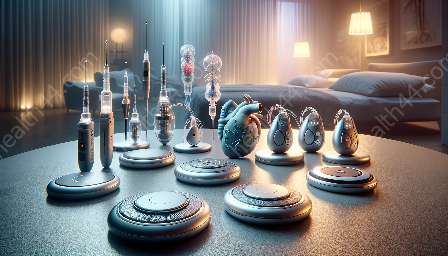Edible flowers have been a key ingredient in the creation of stunning and innovative molecular mixology. The use of these vibrant, colorful, and aromatic blooms has added a unique touch to the world of mixology, elevating cocktails to a whole new level of sensory experience. In this topic cluster, we'll explore the fascinating world of edible flowers, from their properties to their role in molecular mixology, and how they can be incorporated into creative and visually stunning cocktails.
Understanding Edible Flowers
What Are Edible Flowers?
Edible flowers are flowers that are safe for consumption and have been used in various culinary practices for centuries. These flowers not only add a visual appeal to dishes and beverages but also contribute unique flavors and aromas.
Properties of Edible Flowers
Edible flowers come in a variety of colors, shapes, and sizes, each with its unique flavor profile and properties. Some edible flowers are sweet, while others are peppery or citrusy, adding depth and complexity to cocktails.
Health Benefits
Many edible flowers are also packed with essential nutrients and antioxidants, making them a healthy addition to cocktails. For example, certain flowers contain vitamins, minerals, and even medicinal properties.
Best Edible Flowers for Molecular Mixology
Rose
Rose petals are a classic choice for molecular mixology, known for their delicate floral aroma and subtle sweetness. They can be used to infuse spirits, create floral syrups, or even as a stunning garnish.
Lavender
Lavender flowers add a sophisticated and soothing element to cocktails. Their fragrance and slightly sweet, herbaceous flavor make them a popular choice for infusions and cocktail garnishes.
Hibiscus
Hibiscus flowers are prized for their vibrant crimson color and tart, cranberry-like flavor. They can be used to make visually striking and flavorful syrups, adding a burst of color and acidity to cocktails.
Chamomile
Chamomile flowers bring a calming and slightly apple-like flavor to cocktails. They can be used in infusions, syrups, or even as a delicate garnish, adding a touch of elegance to beverages.
How to Incorporate Edible Flowers into Molecular Mixology
Infusions
One of the most popular ways to incorporate edible flowers into molecular mixology is through infusions. Flowers such as rose, lavender, and chamomile can be steeped in spirits to impart their delicate flavors and aromas.
Floral Syrups
Another common method is the creation of floral syrups. Boiling edible flowers with sugar and water creates a sweet, fragrant syrup that can be used to sweeten and flavor cocktails.
Garnishes
Edible flowers also make stunning and eye-catching garnishes for cocktails. Whether used as a float or delicately placed on the rim of a glass, they add a touch of elegance and sophistication to the presentation of the drink.
Creating Stunning Edible Flower Cocktails
Floral Martini
Ingredients:
- 2 oz gin or vodka
- 0.5 oz floral syrup (rose, lavender, or hibiscus)
- Edible flower for garnish
Instructions:
- Fill a mixing glass with ice.
- Add gin or vodka and the floral syrup.
- Stir until well-chilled.
- Strain into a martini glass.
- Garnish with an edible flower.
Lavender Lemonade Fizz
Ingredients:
- 1.5 oz vodka
- 0.5 oz lavender syrup
- 0.5 oz fresh lemon juice
- Club soda
- Lavender sprig and lemon twist for garnish
Instructions:
- Fill a highball glass with ice.
- Add vodka, lavender syrup, and lemon juice.
- Top with club soda and stir gently.
- Garnish with a lavender sprig and a twist of lemon.
Conclusion
In conclusion, edible flowers have become an essential ingredient in the world of molecular mixology, offering not only visual appeal but also unique flavors and aromas. By understanding the properties of edible flowers and their various applications in cocktails, mixologists can create innovative and visually stunning drinks that captivate the senses and elevate the cocktail experience to a whole new level.


